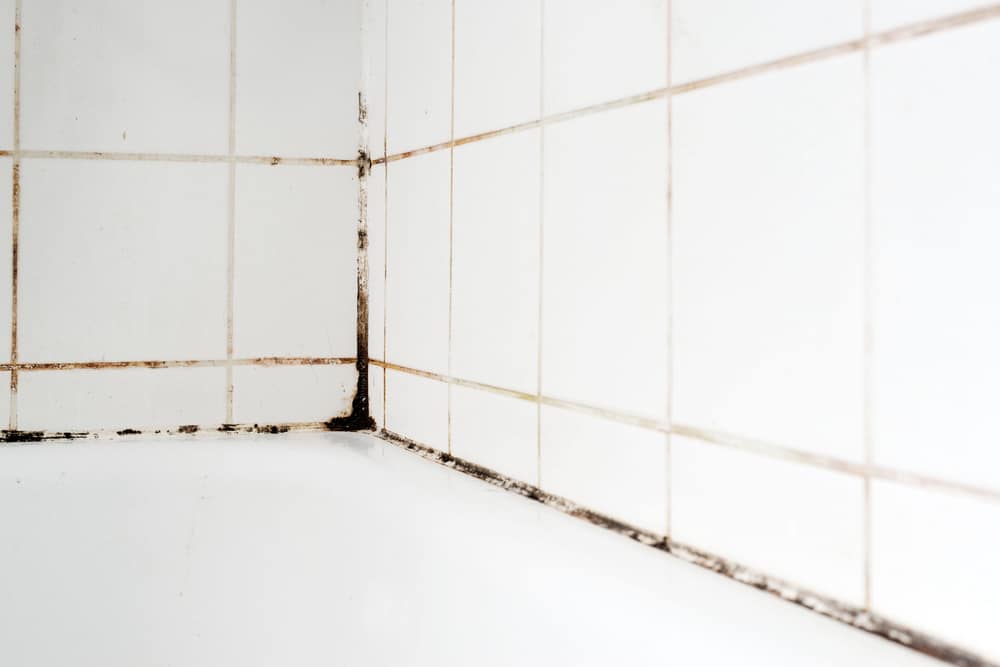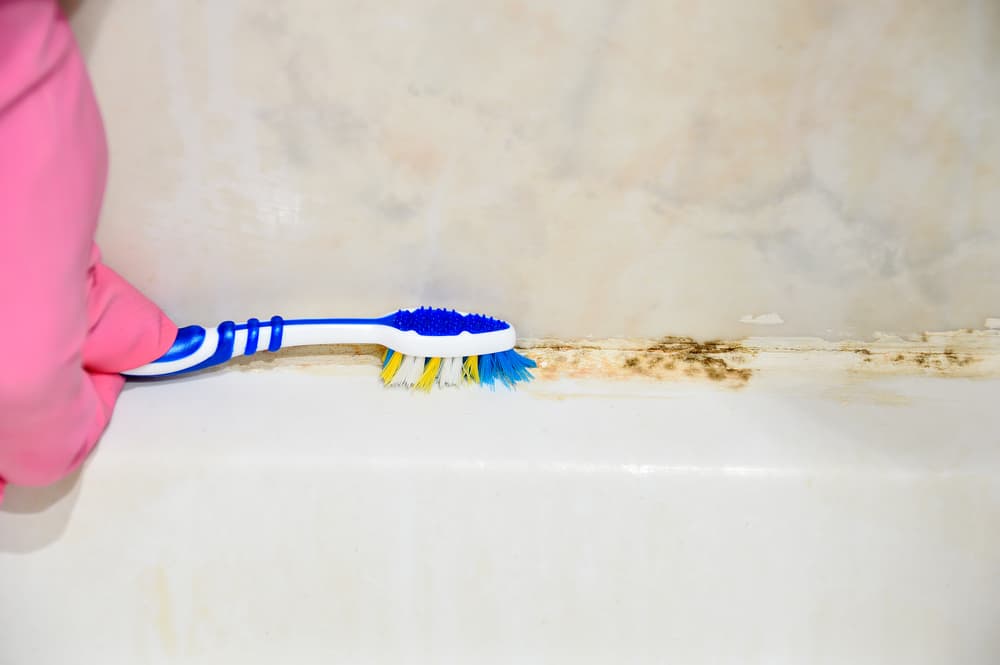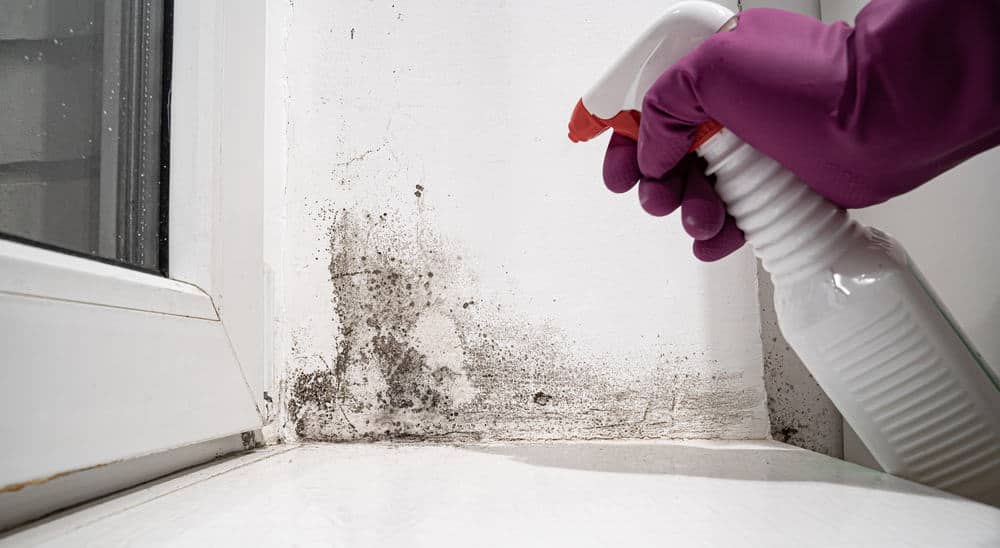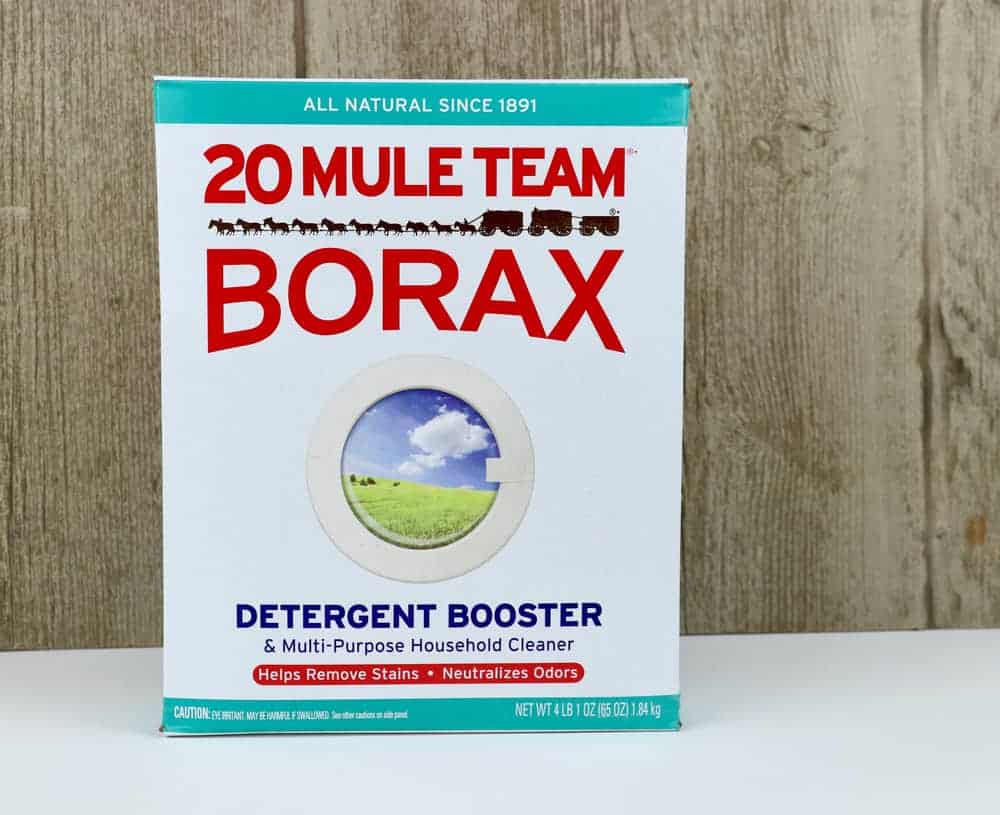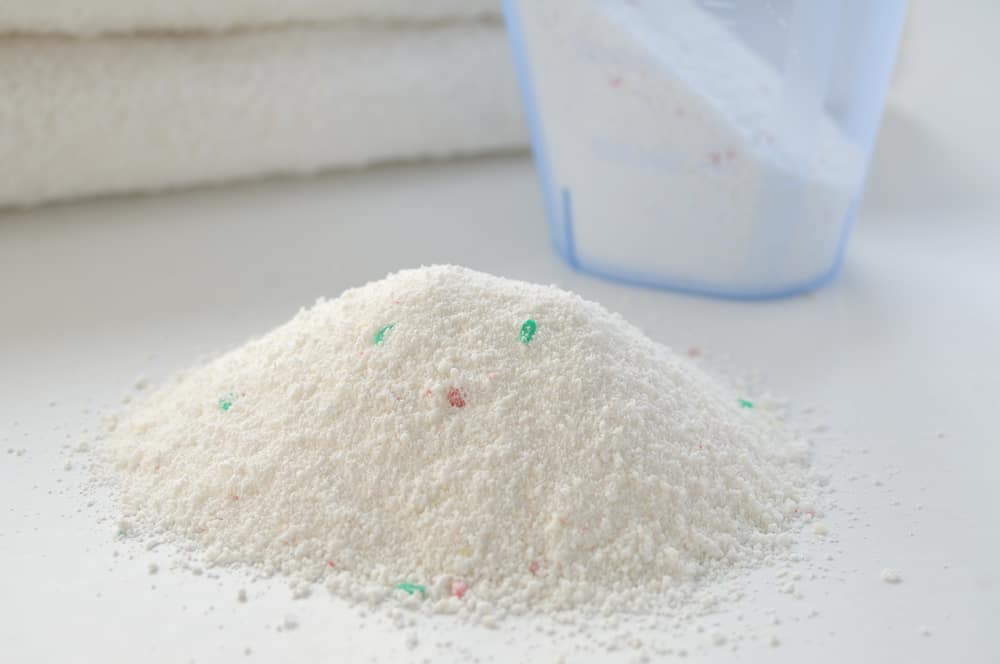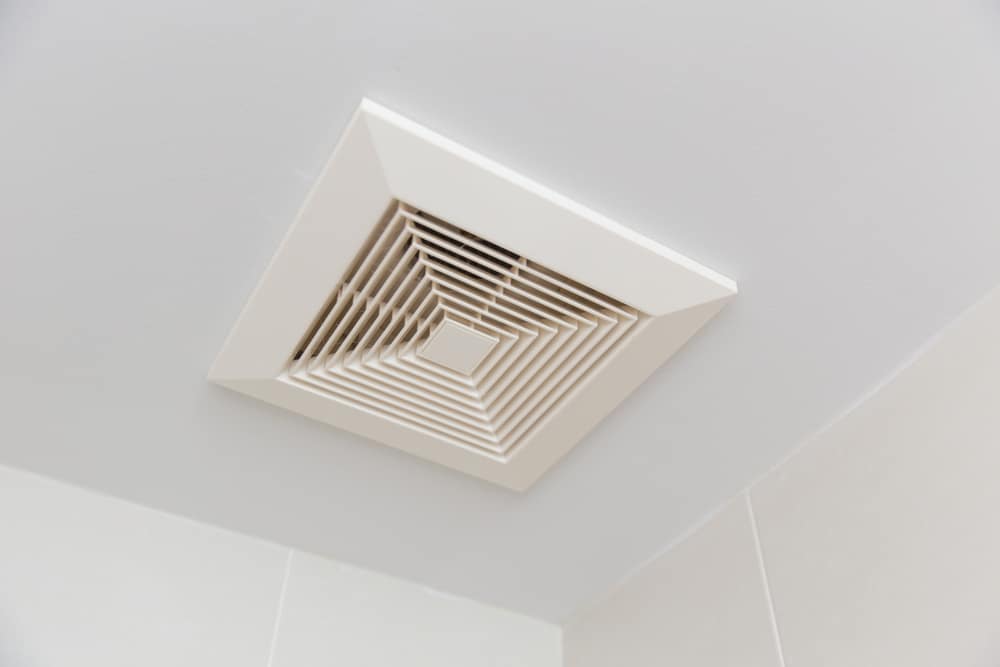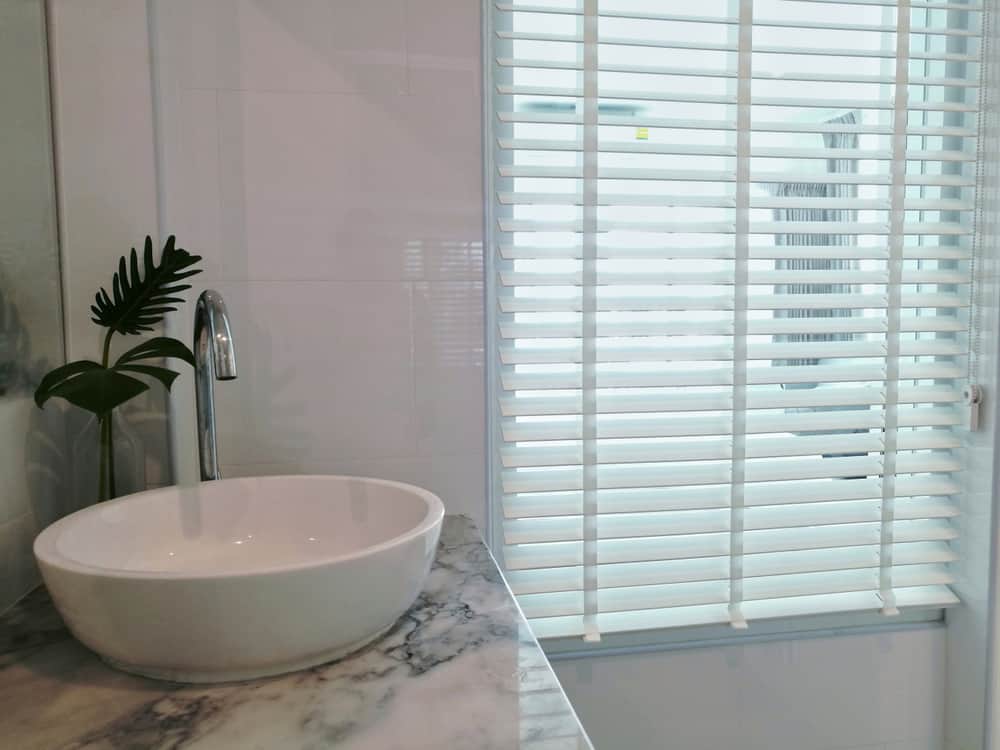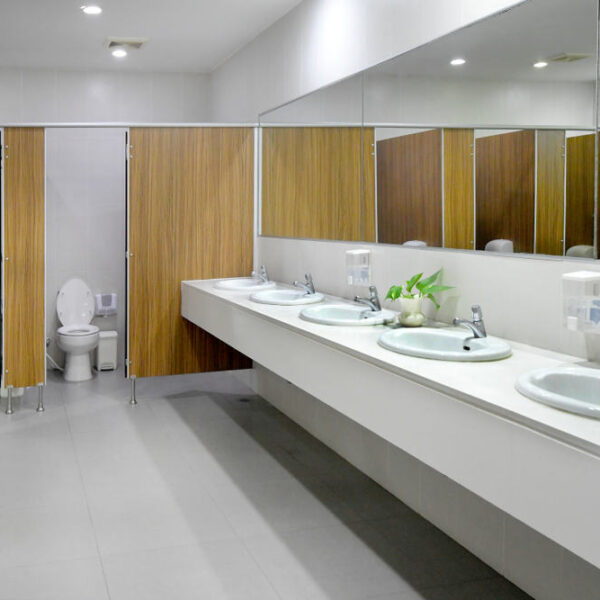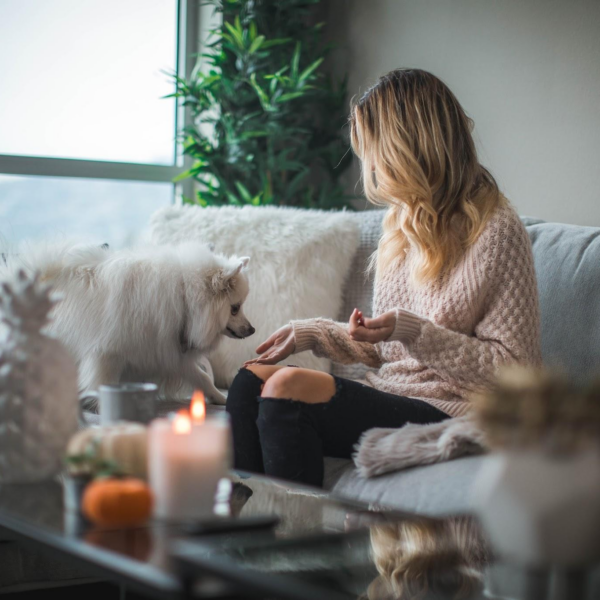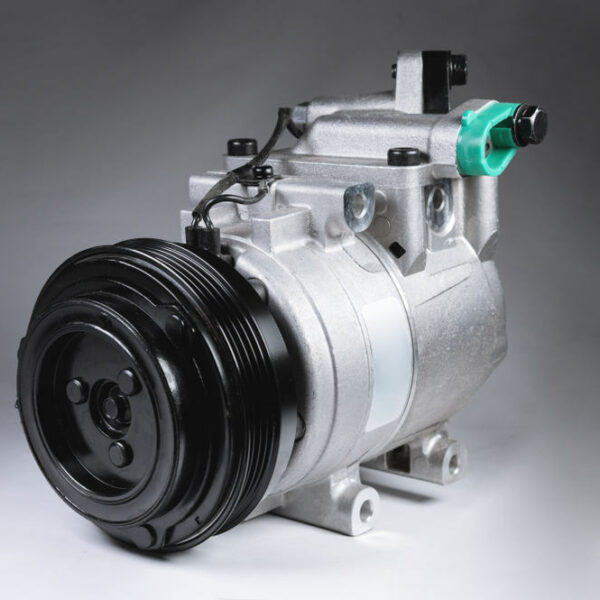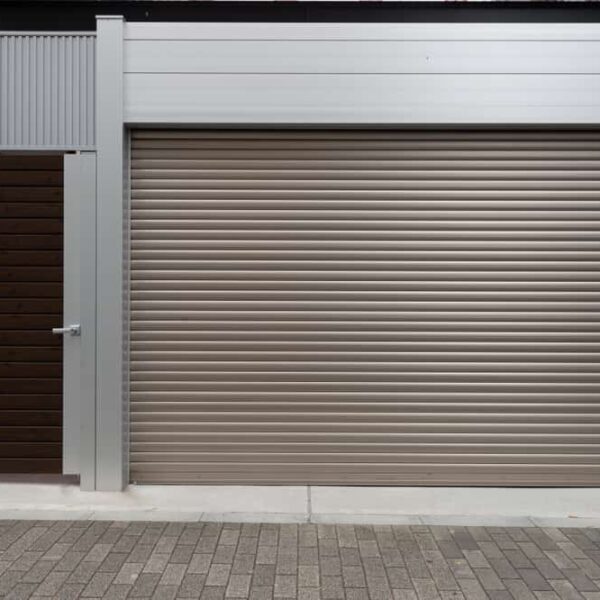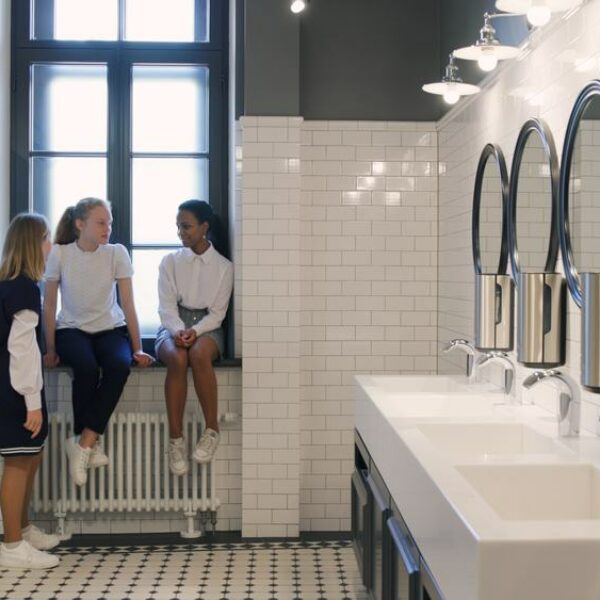Most of us use mold and mildew interchangeably. But there’s a slight difference. Mildew is easy to spot, with its greyish white tone and its powdery texture. You’ll find mildew on exposed surfaces like tile or ceilings. Mould is more hidden, often under sinks or cabinets.
Mould is green, slimy, and fuzzy. But the techniques used to get rid of bathroom mildew and mold are similar. And both mold and mildew are caused by moist conditions and damp spaces. So we’re going to look at effective ways to get rid of bathroom mildew and mold.
How to get rid of mildew
1. Wash it Off
The quickest and simplest way to get rid of bathroom mildew is plain old elbow grease. Clean your bathroom as usual, but pay special attention to the moldy areas. Forget those harsh bathroom brands. You can handle mild mildew challenges with liquid dish soap like Dawn.
If you catch the mold early enough, a bit of Dawn and a soft sponge will do the trick. The best time is after your shower when the walls are moist with steam and the dirt is loose and lifted. Or you can do your cleaning before your bath. That way you can rinse yourself clean.
2. Use a Toothbrush
You might still be worried whether you’re dealing with mold or mildew. In this article, we’re showing you ways to get rid of bathroom mildew and mold as well. But as a general guide, mildew grows on hard, flat surfaces while mold grows on wet fabric, leather, or even paper.
Because mildew is more likely to appear on horizontal or vertical surfaces, you should have a special box for all your old toothbrushes. And since you should replace toothbrushes every three months, you’ll never run short! Label the moldy brushes carefully to avoid accidents!
After all, you don’t want a guest sticking that stuff in their mouths. But remember, cleaning a mildewy bathroom with a toothbrush is back-breaking work. Prepare yourself mentally, wear a suitable mask, and work with the doors and windows open to ensure efficient circulation.
3. Make a Poultice
Your brushing technique will depend on several things. You can simply dip the toothbrush in your regular cleansing product and directly scrub the mildewy spots. Rinse everything off once you’re done, and wipe it down or let the bathroom air-dry with all the windows open.
But you can also use a poultice to enhance your results. Poultices are common in medicine and homeopathy, but you can also use one to fix cracks in marble or to clean a moist space. Toilet rolls or paper towel poultices are an effective way to get rid of bathroom mildew.
After scrubbing with a toothbrush, rinsing, and drying, saturate the toilet paper in your chosen cleaning solution. Stuff the soaked mush into the mildew spots and drizzle extra cleaner over the poultice so that it slowly drips down. This works best while you’re away.
4. Grab a Spray Bottle
Poultices are concentrated by nature, so you need to keep the bathroom well-ventilated to avoid suffocation or contamination. You can place a poultice overnight, or set them up when you plan to be away for a weekend or holiday. Use enough solution to last until you get back.
But for regular everyday cleaning, a spray bottle works better. You’ll need a plastic bottle that won’t be dissolved or corroded by your cleaning solution – some can burn through their containers. Check that any metal parts of the bottle (like springs or hinges) are protected.
This is crucial because metals are more susceptible to the acid and corrosive elements in many bathroom cleaning products. And as always, label your bathroom spray bottle so that it doesn’t get contaminated or inadvertently used for – say – hairspray or carwash conditioner.
5. Make a Paste
You have tons of alternatives when you’re exploring ways to get rid of bathroom mildew. Spray bottles work for high, flat spots that you can’t easily touch, though you’ll still need a brush or cleaning cloth to wipe the spray off. The spray loosens the dirt though, which helps.
It means you’ll spend a shorter time reaching those out-of-the-way spots so you’re less likely to tire yourself out or strain a muscle. But for heavier mildew infestations, a spray might be too thin. You can use the same cleaning solution, but use less liquid so it forms a paste.
This cleansing paste or cleansing paint will need to stay on longer before you rinse it off. It’s good for floors and horizontal surfaces because gravity will soon dislodge the paste from a vertical area. You can hold the paste in place with masking, electrical, or duct tape though.
6. Bleach is Best
The average cleaner rushes for bleach. And unless you have ethical reasons against its use, bleach is a popular way to get rid of bathroom mildew. We use it so often that we take it for granted, but remember that bleach can cause nasty side effects including breathing issues.
Before using bleach on your bathroom mildew, read the instructions carefully. Wear a mask that will block out fumes, and ensure the bathroom is well ventilated. Dilute the bleach according to the directions on its pack or bottle, and wear gloves and goggles for protection.
You can use bleach in a spray bottle with a toothbrush. You can also use bleach as a poultice. But only on white toilet rolls. Colored ones might leach their dye onto your bathroom surfaces. If you’re worried about chlorine, use oxygen bleach instead, aka hydrogen peroxide.
7. Borax is Unbeatable
Fungi thrive in places that have lots of moisture. If the area is bright, damp, and flat, you’ll get mildew. If it’s a darker, wetter spot hidden from direct sunlight, you’re more likely to develop green, slimy, moss-adjacent mold. In both cases, if you suffocate the mess, it dies.
This is the basis behind ways to get rid of bathroom mildew – they disrupt the mold’s oxygen supply. Sometimes, they cut it off completely. Bleach does this. Borax does too. It can be quite effective if you dissolve it in hot water, shake it well, and pour it into a spray bottle.
While a poultice can be useful for corners and edges, a spray bottle works better for tile grouting on walls, floors, and countertops. You can combine these methods as well, using the spray bottle to saturate a poultice for bathtubs, shower trays, ceiling seams, and bath curbs.
8. Try Vinegar and Baking Soda
When borax is used in paste form (rather than a spray bottle), you’ll see it described as borax paint. You might even see DIY recipes for borax milk paint. It can be thin enough to pour or thick enough to slather on with a trowel, depending on your needs. And this recipe has milk.
But vinegar and baking soda are equally efficient ways to get rid of bathroom mildew. And just like borax, you can make a watery spray of vinegar and water or a thickened paste of vinegar and baking soda. These two cause a fizzy reaction, so you have to use them instantly.
If you’re using a spray, sprinkle dry baking soda onto the mildewy spot. Follow with a spritz of vinegar. It fizzes and foams as you watch. For a paste, mix the two in a dish and apply it on the mold while it’s still fizzing. Pastes should sit on the mildew for a few hours or overnight.
9. Commercial Cleaners Can Help
You might see bathroom mildew described as black mold or shower mold. This distinguishes it from green mold, the slimy kind you find under rocks or beneath abandoned buckets and containers below the sink. This distinction is important at stores.
Why? Because many bathroom cleaning products will get rid of black mold, grey mildew, and green mold as well, but the dosage and application may differ. For example, lots of baked goods have mold inhibitors, but you can’t exactly scrub the bathtub with bread!
You’ll want to use commercial products like Clorox, Microban, Concrobium, Benefect, RMR, or Mold Armor. These products can be quite concentrated, so you’ll need to carefully read the labels. You should check if they work against both mildew and mold, and are pet-safe.
10. Invest in Enzyme Cleaners
When we’re looking at ways to get rid of bathroom mildew, we focus on those unsightly specks between your gleaming tiles. Or maybe those black splotches on your shower curtains (though technically, that’s mold rather than mildew – it has that fuzzy slimy texture to it).
But you can also get mildew on the untiled walls or ceiling if there’s a pipe leaking behind it. Even painted portions can let a little steam sneak in and trigger a sprout of mold. Enzyme cleaners, biocides, and antimicrobials kill the spores and wash off all the leftover stains.
Try a product like Enzyme Wizard or ferment your own formula at home with citrus peels, yeast, and sugar. DIY enzyme cleaners get more effective over time, so the longer it ‘cooks’, the stronger it becomes. Put a start date on the bottle and label it so nobody tries to drink it!
11. Install a Good Bathroom Fan
Bathroom mildew and mold can spread easily once it gets rooted on your floors, walls, and backsplashes. This is because the fungal spores latch and proliferate at alarming rates. And apart from the live mildew itself, you’re stuck with the stains it leaves even after it’s all gone.
Inspect the bathroom regularly so you can catch the mildew as soon as it appears. Track the areas where it accumulates most, and look out for any leaks or spots where moisture gathers. And remember, the dryer the bathroom, the less the mold, so install a timed bathroom fan.
Ideally, you can program an exhaust fan to kick in immediately after you leave the shower. Or you can link it to the bathroom light switch as a memory trigger. This way, every time you switch the light on (or off), you’ll remember to activate the fan. A dehumidifier can be helpful too.
12. Consider Working on Your Windows
A fan that kicks in automatically (and periodically) will keep the bathroom from getting too damp. But bathroom windows are typically small and fogged to protect your privacy. If you own the house, consider enlarging the windows so the bathroom gets better ventilation.
You can still keep your bathrooms discrete by fogging the glass or using louvers. But you could do something as simple as opening the windows after a shower. And leaving them open for a few hours every day. This lowers your bathroom humidity, reducing bathroom mildew.
Other ways to make your bathroom warmer and brighter include sun tunnels, strategically placed mirrors, recessed lighting, skylights, larger doors, and light-to-white bathroom décor. You can achieve all this with a targeted bathroom renovation, so start saving up for that!
13. Take a Look Outside
Your dew point plays a big role in your bathroom mold problem. So look at your bathroom from a different perspective. Are there trees, bushes, a fence, or a wall around that block light? Anything that prevents daylight keeps the room darker and more inviting to mold.
If you have any control over the property, you might consider shifting the fence or replanting any shrubs that keep sunshine out of your bathroom. More natural warmth and light means fewer chances for black bathroom mold to develop and sink its spores into your pretty tiles.
This point may seem dramatic, but in reality, bathroom mildew is caused by condensation rather than leaks. Do any bathroom improvements that reduce the chances of droplets congealing on your surface. It’s a worthwhile way to get rid of bathroom mildew and mold.
14. Try Using a Moss Mat
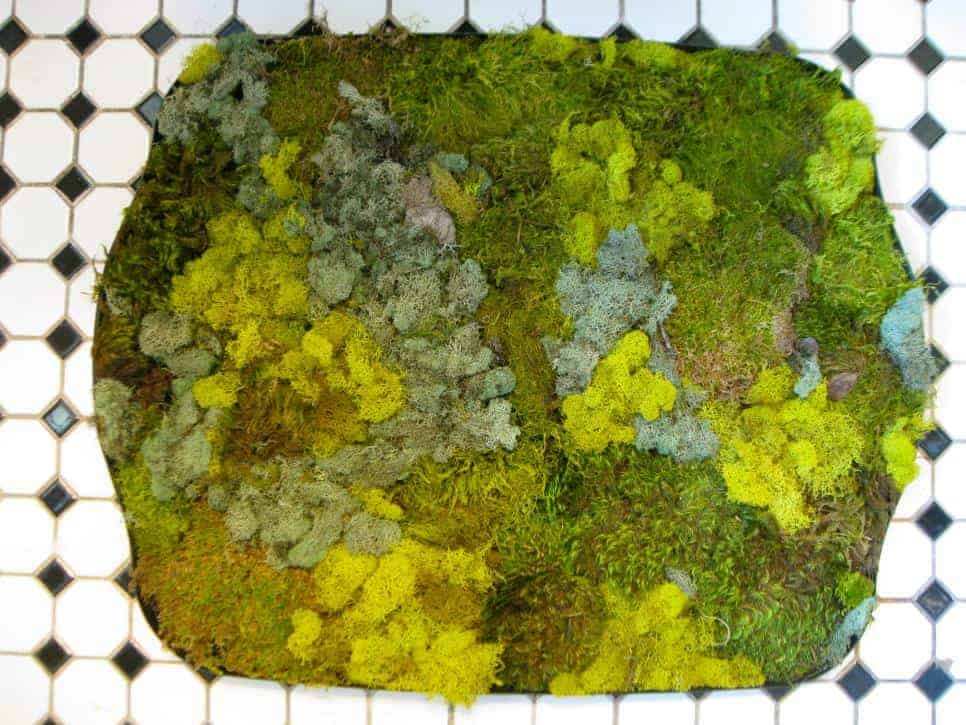
DIY moss mats are experiencing a revival. They’re beautiful, stylish, and they show off your quirky personality. Plus, they thrive in bathrooms because the moss absorbs all that floating water vapor. This characteristic helps the moss mat soak up some of that excess steam.
In this way, your moss mat leaves less moisture available for the fungi that cause mold. It’s a small, natural, aesthetic way to get rid of bathroom mildew. But keep the moss mat well-tended. After all, if you’re not careful, its underside might soon get green, moldy, and slimy.
Moss mats can be natural or synthetic, so choose carefully based on your needs. Organic ones want watering and tending, while artificial ones may need regular cleaning. But both options are good at wicking bathroom moisture, so both can help you control black mildew.
15. Call a Mildew Professional
If you’ve tried all these ways to get rid of bathroom mildew and failed, you may need to call in the big guns. Professional mold removers may seem expensive, but if your trouble spot is larger than 10m2, you’re going to need their help (and maybe a booking at a nearby Airbnb)!
Just like exterminators, carpet cleaners, and fumigators, you’ll need to choose with care. Online reviews are good, but personal recommendations are better. Ask your friends, relatives, and neighbors for references. You can ask hardware store staff for suggestions.
Sometimes, your bathroom mildew damage is really bad. The experts you call in may have to remove your tiles and tear out infested walls, ceilings, and floors. You can avoid things getting this bad through daily inspection, consistent spot cleaning, and weekly scrubbing.
Top Tips to Beat Mould and Mildew
While these two irritations are related, they look quite different. But they’re both caused by fungi and damp bathroom conditions, so here are a few ways to get rid of bathroom mildew:
- Double-check your dew point.
- Use a toothbrush, spray bottle or poultice.
- Try bleach, borax, or commercial mold inhibitors.
- Keep the bathroom dry with timed fans, dehumidifiers, and natural light.
- Experiment with pantry products like vinegar, hydrogen peroxide, and baking soda.
- Play with household extracts like clove, grapeseed, and essential oils.
Do you know other ways to get rid of bathroom mildew? Share your tips in the comments!
